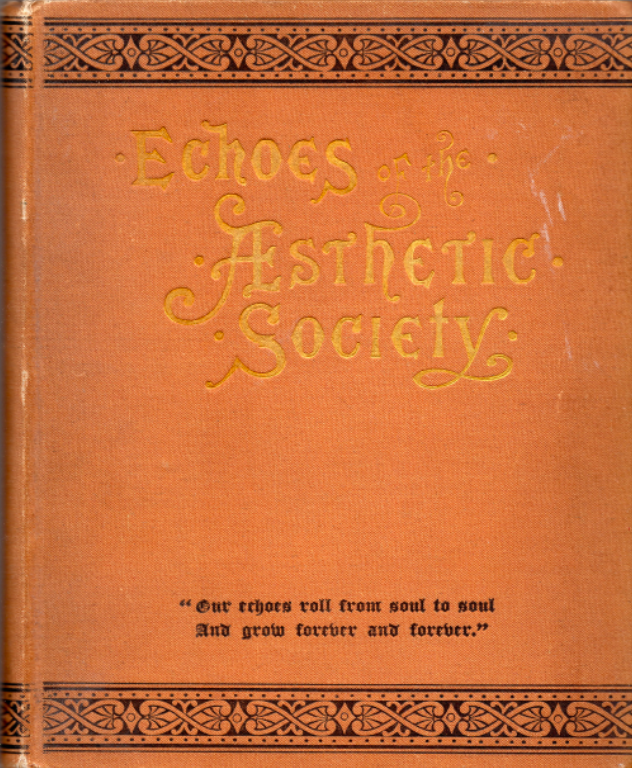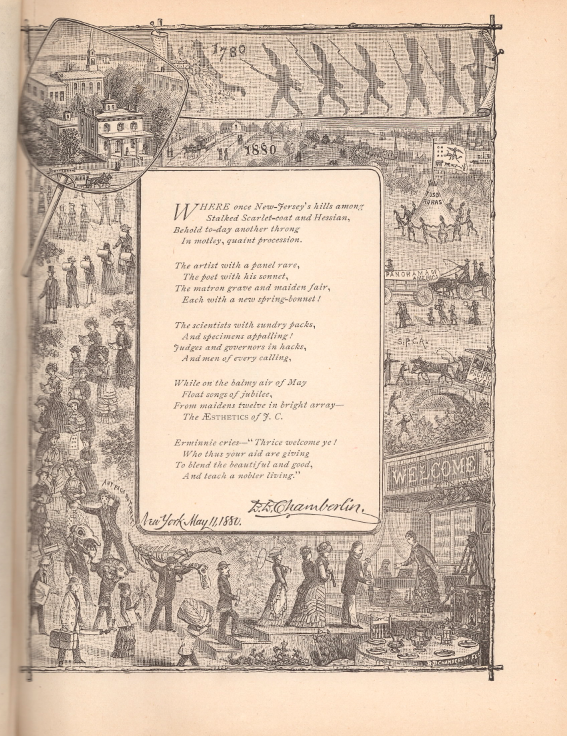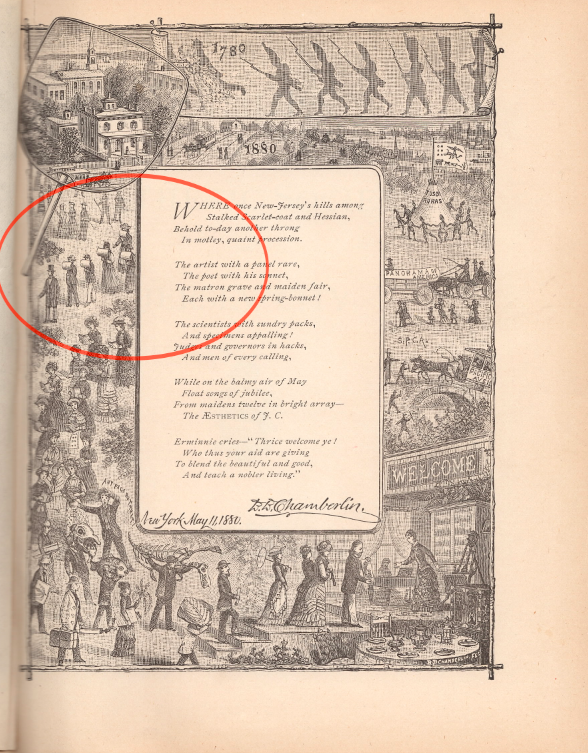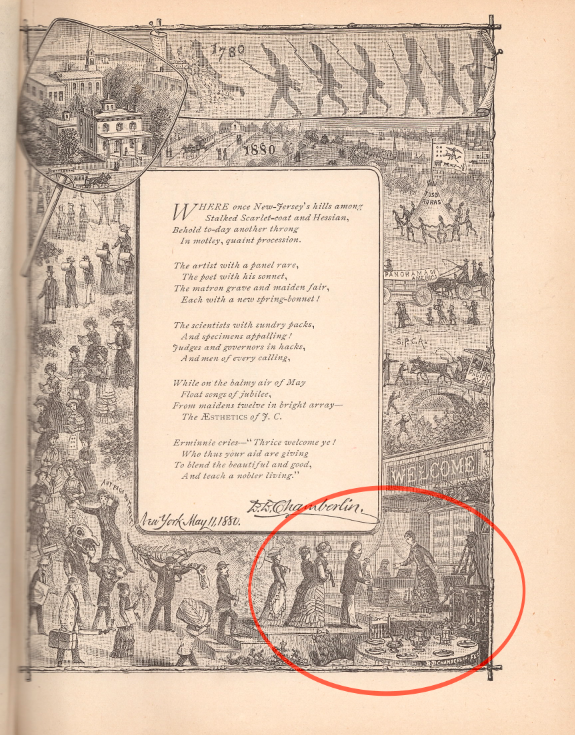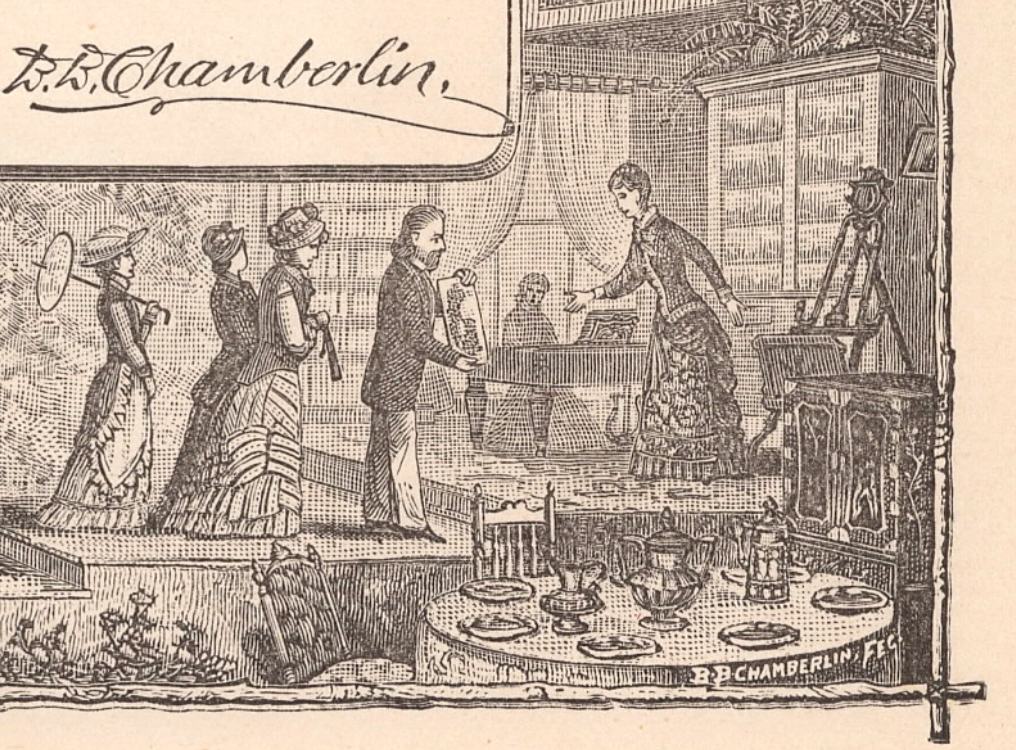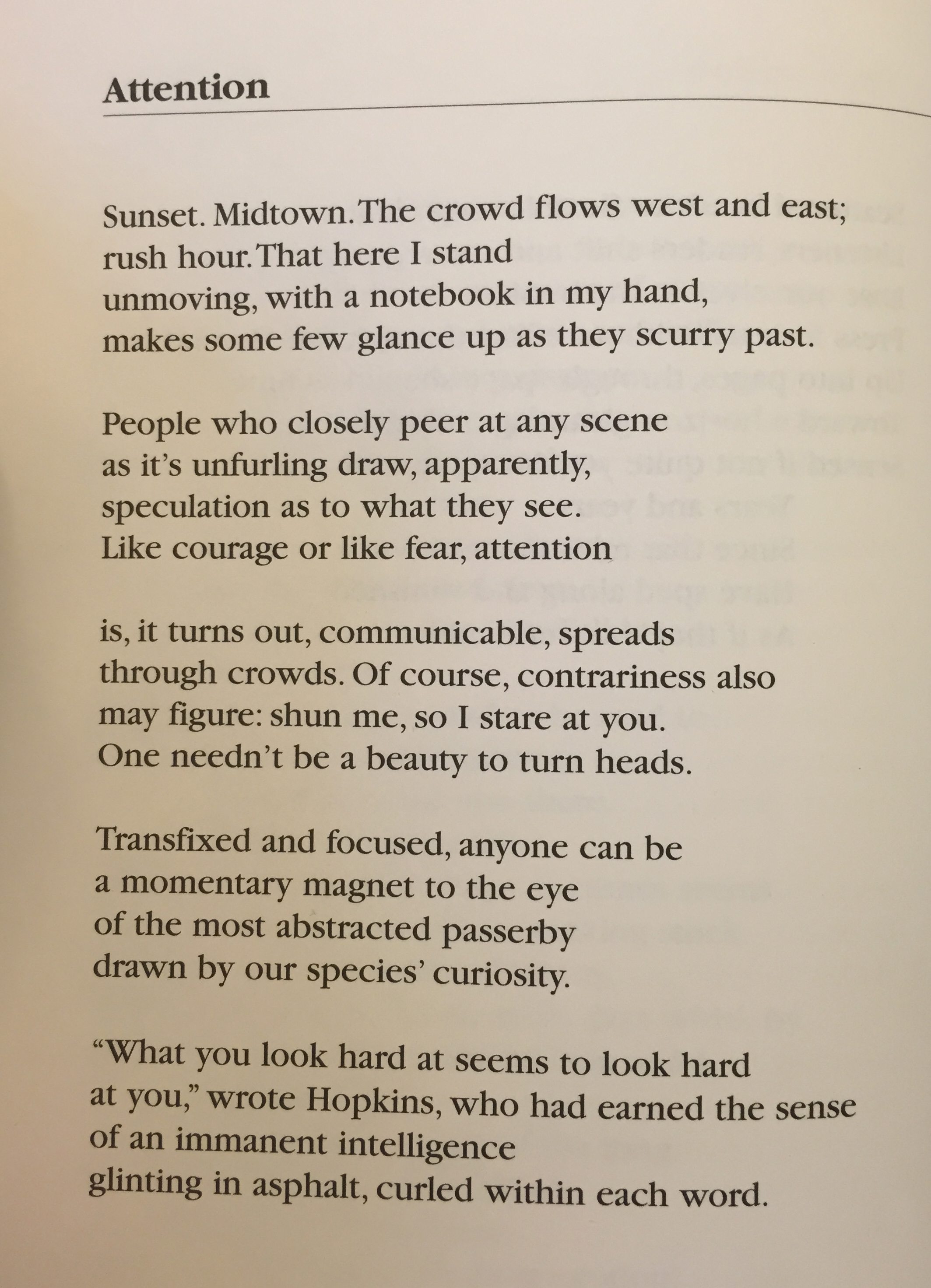An associate of ESTAR(SER) who is a bookseller in Ohio (and who wishes to remain anonymous, but who tells us he was connected, until two years ago, with the midwestern Ausonian Fellowship) writes with a find:
Dear Sir or Madam,
Into my possession came lately a copy of an uncommon volume: Echoes of the Aesthetic Society of Jersey City (New York: Thompson and Moreau, 1882). I include a snapshot of the cover here:
I had heard of the body, and had come to suspect that the patroness of this salon-association, Mrs. Erminnie A. Smith, was in fact a devotee of the Order, having come under the influence of Susan Elizabeth Blow, who will be familiar to your readers. I therefore perused the volume closely, with an eye toward uncovering any Birdish “Easter Eggs” it might secrete. I have persuaded myself that I have been successful, and wish to test my hypothesis by means of this informal correspondence with your “Notes and Queries” — in the hope that, should my argument withstand scrutiny, I might elaborate it into a contribution to the Proceedings.
Initially, I must confess, I was disheartened to discover, in these yellowed pages of high-quality paper, a quite conventional assortment of poetic appreciations and Victorian-sentimental chapbook squibs. I caught no glimpse of any substantive texts that might be read as allegories of the Practice or as veiled allusions to its rites and forms.
But my persistence was, I believe, ultimately rewarded. It was on examining the frontispiece…
…with a high-powered loupe that I discovered two highly suggestive vignettes, which I believe confirm our longstanding suspicions about Mrs. Smith and her aesthetical acolytes of Jersey City.
First, then, take a closer look at the left hand margin of the (inert) inset of the poetaster’s labors:
A close look reveals a rather mysterious aggregation of figures:
Could it be doubted that this is a “formation” of the Birds — indeed, something very close to the traditional “Phalanx”? I think your readers will, on spending some time with the image, come to agree that it must be this and nothing else. Though questions do remain. First, the screens that the figures are holding before their faces strongly suggested the “reduction screens” heretofore thought to have their origin in the work of Inyard Kip Ketchem. But if I am not mistaken, this image (from 1880) predates the existing terminus a quo for the “Ketchem Screen.” In light of this discovery, more work is clearly needed on the history of the use of this optical prosthetic in Bird exercises. Second, it is difficult to deny that the group looks very much as if they are “attending” on the top-hatted figure to the left. He does not appear to be a statue, much less a painting. Rather, he seems quite wholly to be a human person. To the best of my knowledge, the only Protocol that positions Birds in attendance on a human being is the so-called “Prosphorion,” on which much ink has been spilled in ESTAR(SER) circles of late (I allude to your recent three-part series on the “renaissance” of this Practice). Needless to say, if the image above can be taken to represent a Prophorion, the entire extant history of this Practice will need to be re-written — since to date it is associated closely with the work of Erich Auerbach, Istanbul in the 1930s, and the now well-known “Boğaziçi Rolls.” More work is evidently in order.
Nor, I think, does all of this exhaust the document in question, as far as the history of the Order is concerned! Since a closer look at the lower right hand corner of the same page…
…reveals another highly-suggestive scene:
Modern devotees of the Practice will here descry a nearly shockingly blatant depiction of the commencement of an “Action” (the easel/print-stand to the right looks ready to receive the “object” in the hands of the bearded gentleman-caller; the well-appointed table in the lower right has clearly been arranged for “colloquy”). It would seem that Mr. B. B. Chamberlin — a well-known draftsman-naturalist and collector of minerals in the Hudson Valley — chose to be surprisingly explicit in his celebration of Mrs. Erminnie Smith’s gracious hosting of her volée!
Thank you for your attention,
R.C.
We are ourselves, I think, largely convinced here — but critical responses are welcome, and may be addressed to the corresponding secretary: corrsecretaryEST@gmail.com.

